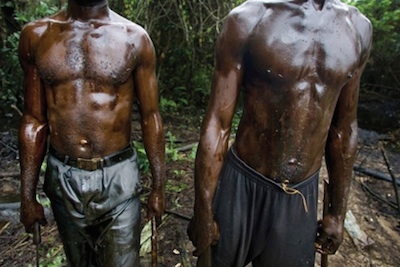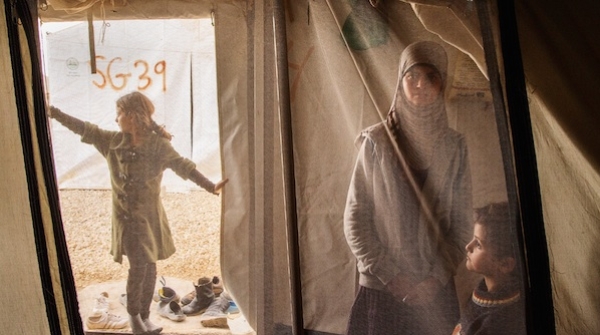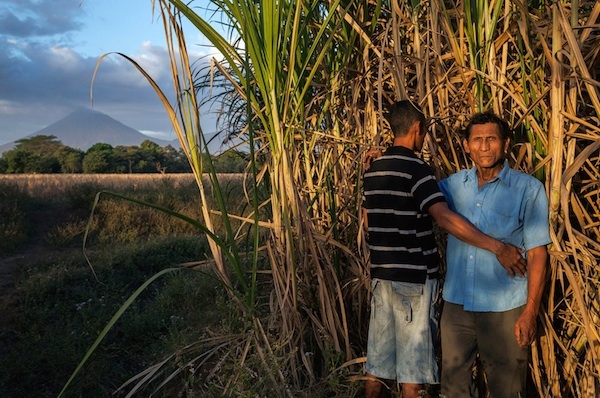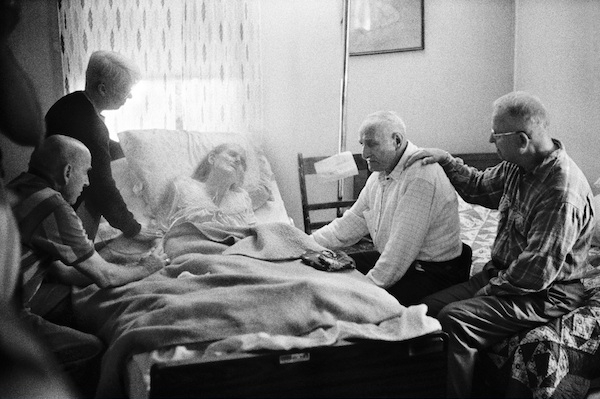Photographer Profile - Ed Kashi: "I want my work to have a part in change"

|
|
|
“The most important things I’ve done have always come out of my personal work,” he says.
Kashi is one of the most honored documentary photographers of his generation, most recently being named one of the winners of the 2015 Aaron Siskind Foundation Individual Photographer’s Fellowship grants. A member of the VII Photo agency, he has shot 17 feature stories for National Geographic magazine. He’s also worked for Time, Newsweek, and the New York Times Magazine, probing social and political issues from the Middle East to Africa and America in great depth. His books include When the Borders Bleed: The Struggles of the Kurds; Madagascar: A Land Out of Balance; and Denied: The Crisis of America’s Uninsured. His book Curse of the Black Gold: 50 Years of Oil in the Niger Delta, was the result of three years of work. He spent eight years on his best known book, Aging In America: The Years Ahead, which examined an emotionally intense subject with intimacy and insight. American Photo magazine named it one of the best books of 2003.
But that was then. In recent years, Kashi has broadened his work to include filmmaking; this year he received the Pictures of the Year International Multimedia Photographer of the Year award for project about Syrian refugee children. More significantly, he is at the forefront of a wave of change that is transforming the way journalism is being practiced in the digital age.
In the past decade, the traditional media, faced with economic challenges and prodded to chase Internet page views, has sharply cut back support for the kinds of in-depth documentary projects Kashi does. Like other photographers, he’s had to find new ways to tell his stories. His Syrian refugee project, for instance, was supported not by a magazine assignment, but by the International Medical Corp, an NGO. Only later was the work he produced licensed by Time.

“That’s the new paradigm,” says Kashi. “There’s not a lot of editorial work out there, and the other economic pillar of the old style of photojournalism, archival sales, has diminished significantly. But the beautiful thing is there are all these other ways that now exist to work as a photographer that I couldn’t have imagined 30 years ago when I started.”
The question of whether such new ways of working are journalistic in nature, or whether they should more properly be termed activism, is not of primary importance to Kashi.
“At this stage of my life, with all I’ve done and all I’ve seen, I don’t want to just keep taking pictures for the sake of taking pictures, as much as I love that,” he says. “I want my work to have a part in change, and I’ve proven in small and big ways that that is possible.”
The New Authorship
The history of advocacy in photojournalism stretches back at least to Jacob Riis’s 1890 book How The Other Half Lives, which showed America the squalid tenements of New York City. Traditional standards have kept activism and journalism separated, though the boundaries between them have never been well defined — as Mike Taibbi of Rolling Stone noted in 2013, all journalism is advocacy at some level. Documentary film has been more apt to blur the boundaries between the two realms, with filmmakers straddling the roles of journalist and auteur, gathering facts and exercising creative authority to frame compelling arguments, while sometimes also becoming an integral part of their own stories.
In today’s multimedia, multi-platform world, the line between activism and journalism is hazier than ever.
“One of the amazing things about the digital revolution,” Kashi says, “is that it has allowed us to have a whole new level of authorship in our work.”
Two projects Kashi has been working on recently are perfect examples of that. One focuses on a mysterious kidney ailment affecting workers on sugar cane plantations in Central America. Some 10,000 people have died or become sick from the affliction over the past decade, says Kashi, who has spent two-and-a-half years on the project, producing a photo-reportage series about the situation and a portrait series focusing on workers, as well as a 15-minute documentary film.

The ongoing project is sponsored by two non-profit organizations, including the Open Society Foundation, which has used Kashi’s imagery to raise awareness of the disease via Instagram and other outlets. As with his Syria project, his work from Central America has been made available to media outlets: His film, for instance, has been featured on National Geographic’s digital platform.
The organizations he is working with have also partnered with medical teams, including epidemiologists, to discover what is causing the illness. “This is the kind of personal project I’ve always prided myself in and gotten excited about,” Kashi says. “It’s not just about the photography and the artistry and the images, but also about being part of change.”
His other current project is a three-year partnership between the VII agency and Rutgers University to create a storytelling platform that highlights the school’s diverse student body and explores issues surrounding immigration. Called Newest Americans, it is an online magazine featuring photo stories and films by Kashi and fellow VII photographers Ashley Gilbertson and Ron Haviv, as well filmmaker Julie Winokur of Talking Eyes Media, who is Kashi’s wife. Students and faculty also contribute.
“The goal is to get this work out in the media,” Kashi says. “The films we’ve made for the project have already been in the Atlantic online and National Geographic online.”
A Question of Identity
In some respects, Kashi’s transformation from documentary photography to advocacy journalism amounts to just a small shift of self-identity.
“When I did the work on the Kurds and the work on aging, it was advocacy work, but I didn’t realize it,” he says. “It was work that I was producing with and for the media, and advocacy groups would often later take it and use it to raise awareness about issues. Whereas now my collaborators are the activists and the advocacy groups, and the work filters back to the media.”
Kashi grew up in New York in the 1960s and 1970s and was drawn at an early age to activism, attending anti-war demonstrations and Earth Day events. “These things were part of the world I was in, and I embraced it. It was deep inside of me, to not only be engaged with the world but to make a difference. So it was organic that when I started working as a photojournalist I was drawn to social issues and then geo-political stories. Over the years it became really clear to me where this came from.”

He also became a photographer to make a living. When he attended Syracuse University, he thought at first he wanted to be a writer but was absolved of that idea, he says, “by a particularly brutal poetry teacher.” Afterward, he panicked. “I thought, ‘Oh my god, what am I going to do?' My dad died when I was 10, so I grew up with my back against a wall, in terms of having anything to fall back on. But it happened that I went to a school with a great photo program, so I thought about photography and how it would allow me to do the things I wanted to do.”
Today he tells young photographers that it is still possible to do meaningful work. “But I tell them them that if you sit around and wait for something, it’s never going to happen,” he says. “The reality is that you have to make opportunities for yourself and be willing to invest your time, your money, your energy and your heart into creating things.”
Kashi is creating new opportunities by working with advocacy groups, “in the scrappy way photographers make things happen,” he says.
“You’re working with partners who can get your work in front of the right people, as well as the public," he says. "I believe in this — you get your work in front of the right 1,000 eyes, and you can make a huge impact. But I could have the cover of a major magazine and have no impact.”



